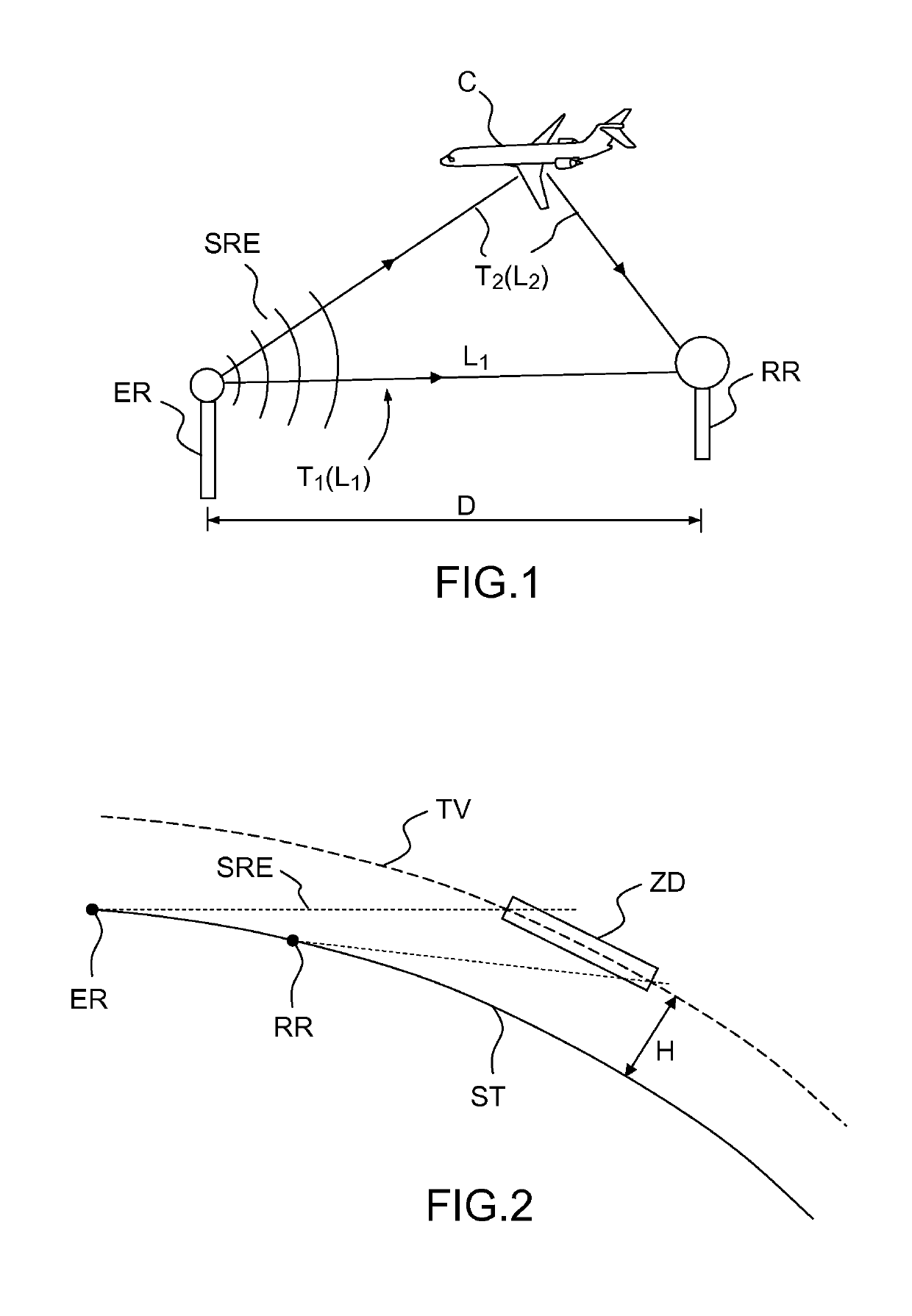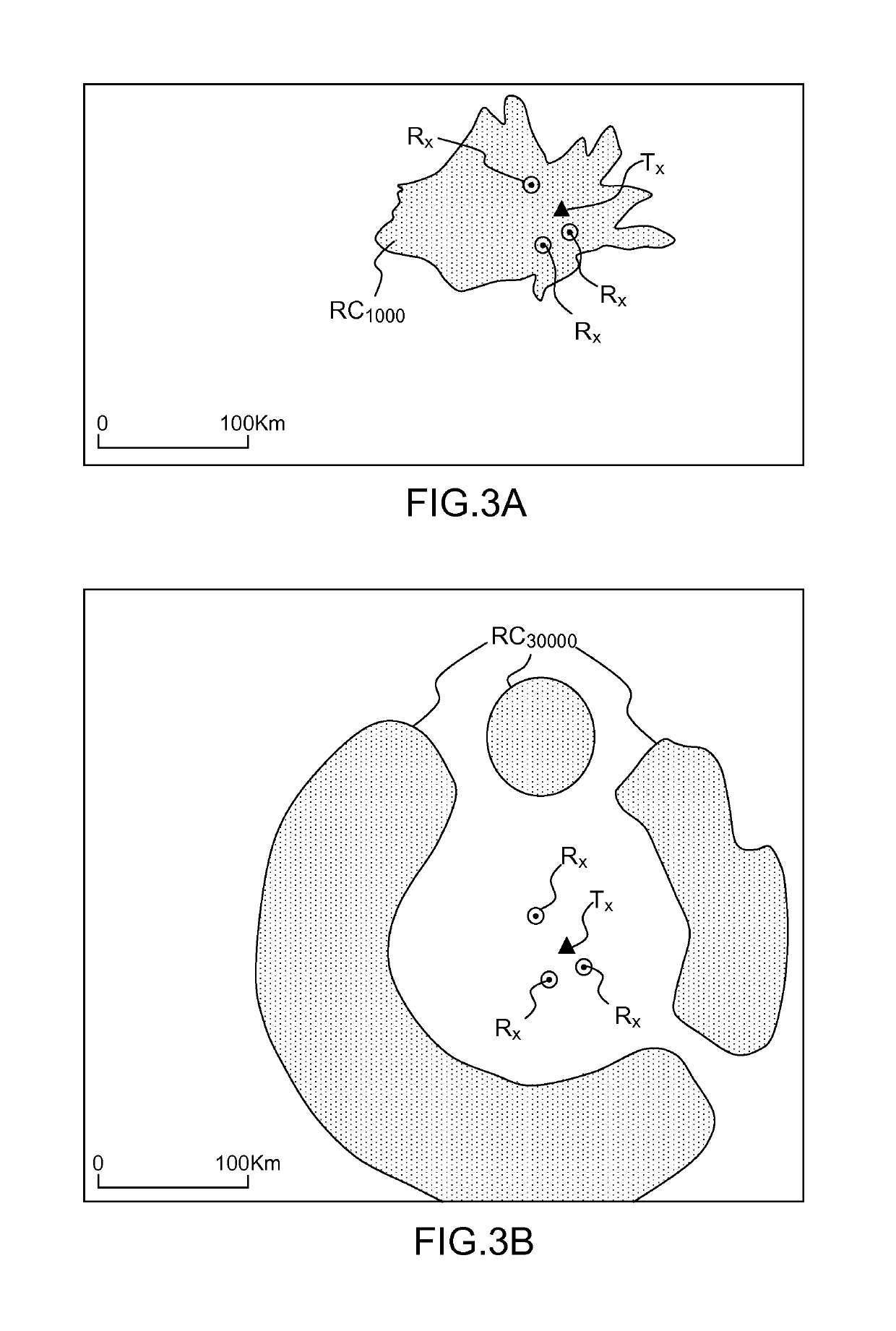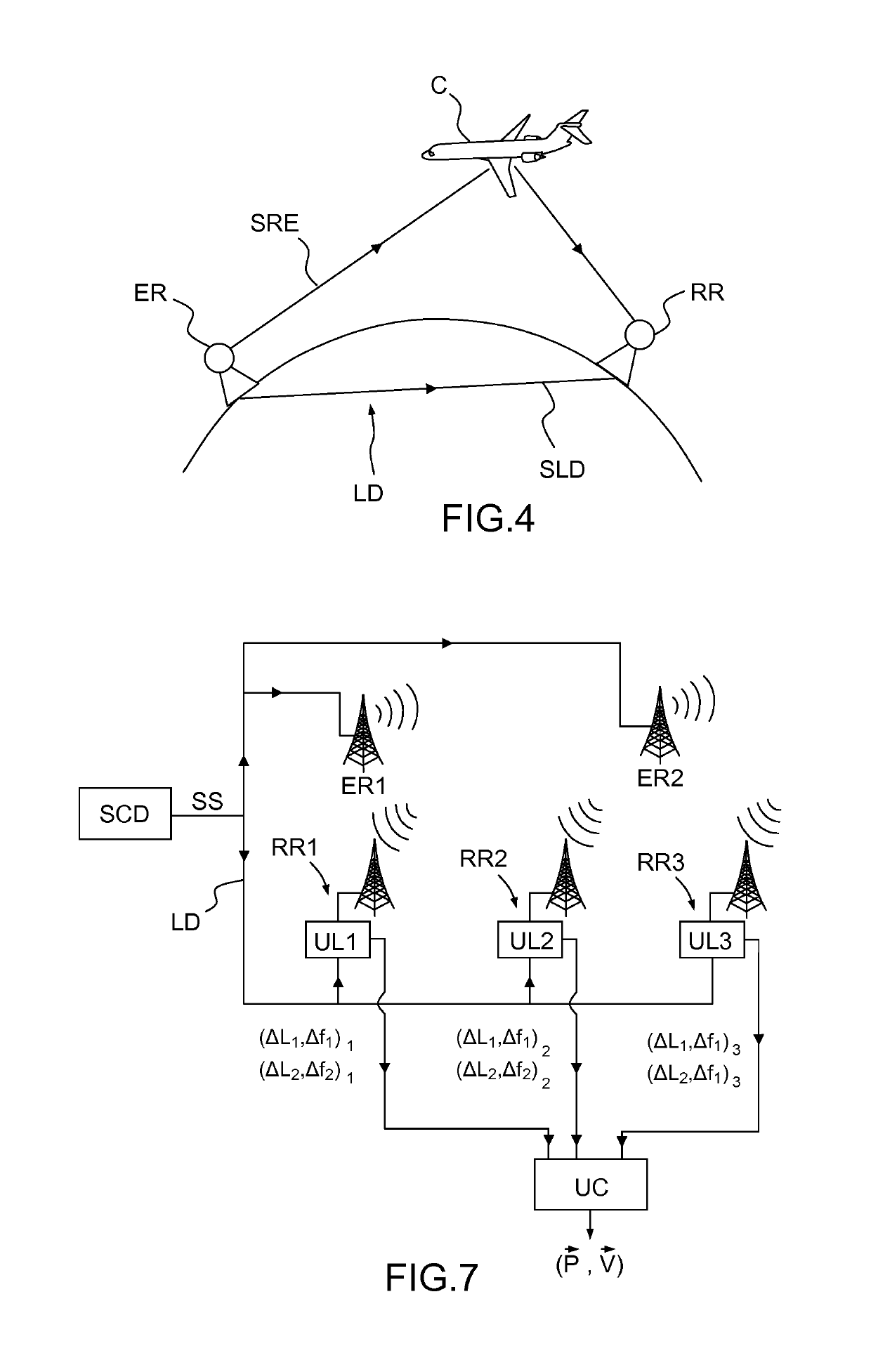Method for locating a target and multistatic radar system for implementing such a method
- Summary
- Abstract
- Description
- Claims
- Application Information
AI Technical Summary
Benefits of technology
Problems solved by technology
Method used
Image
Examples
first embodiment
[0059]FIG. 5 illustrates in greater detail the structure and the operation of a detection system according to the invention. The transmitter ER is a digital television transmitter, which receives from a central broadcasting station SCD a digital source signal SS which represents the succession of bytes constituting an MPEG file. This signal drives a digital modulator MOD, parametrized with modulation parameters specific to the transmitter, which generates a signal at intermediate frequency. This signal:
[0060]on the one hand, is converted to radiofrequency so as to be irradiated by a transmit antenna in the form of a radioelectric signal SRE;
[0061]on the other hand is sampled and quantized so as to be transmitted in digital format along the data transmission line LD, in the form of a digital reference signal SLD. At the level of the receiver RR, a replica reconstruction module RSR uses this digital signal to reconstruct or regenerate a signal SREF “imitating” a signal which would hav...
second embodiment
[0065]FIG. 7 schematically illustrates the general structure of a system according to said This system comprises a central broadcasting station SCD transmitting the source signal SS to two transmitters ER1, ER2 and (by way of the data transmission line LD) to three receivers RR1, RR2, RR3. Each receiver comprises an antenna and a local data processing unit UL1-UL3. Each said local processing unit comprises the blocks for modulation, reconstruction of the replicas and cross-correlation whose manner of operation was described above, and generates two pairs of values (ΔLi, Δfi)j, where “i” identifies the transmitter (i=1,2) and “j” the receiver (j=1,2,3). These values are transmitted to the central processing unit UC, which makes use thereof to calculate the position {right arrow over (P)} and the velocity {right arrow over (V)} of the (or of each) target.
[0066]It will be noted that, to locate a target, three values ΔLi suffice. Now, in the system of FIG. 7 there are six of these valu...
PUM
 Login to View More
Login to View More Abstract
Description
Claims
Application Information
 Login to View More
Login to View More - R&D
- Intellectual Property
- Life Sciences
- Materials
- Tech Scout
- Unparalleled Data Quality
- Higher Quality Content
- 60% Fewer Hallucinations
Browse by: Latest US Patents, China's latest patents, Technical Efficacy Thesaurus, Application Domain, Technology Topic, Popular Technical Reports.
© 2025 PatSnap. All rights reserved.Legal|Privacy policy|Modern Slavery Act Transparency Statement|Sitemap|About US| Contact US: help@patsnap.com



